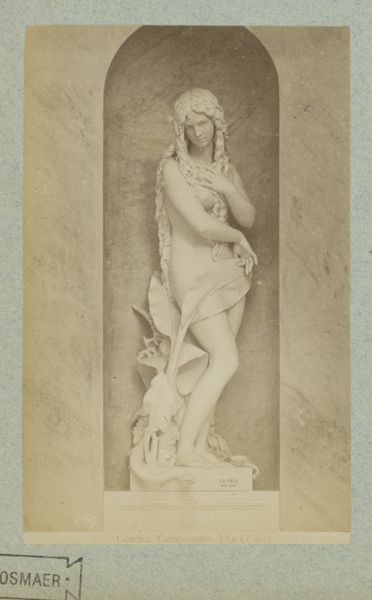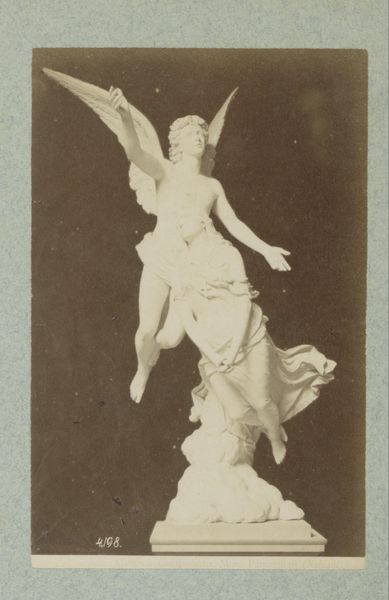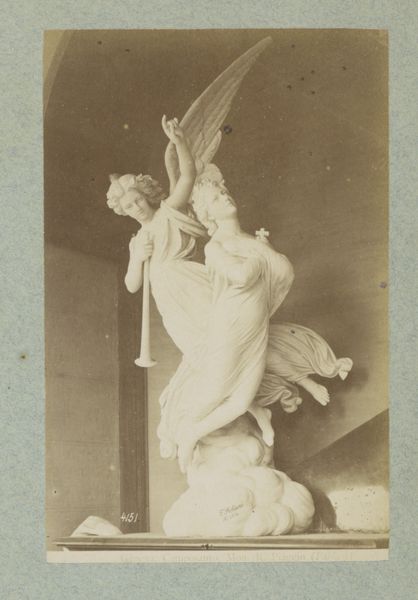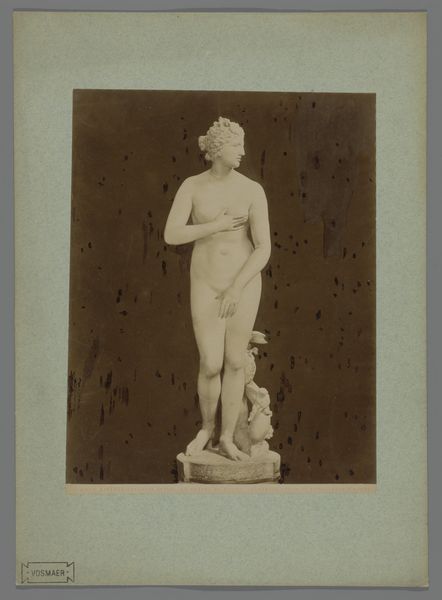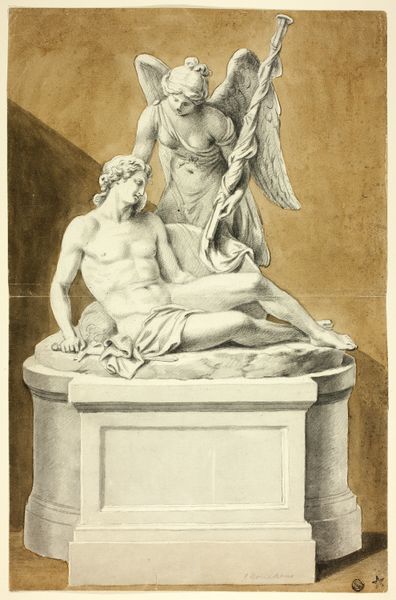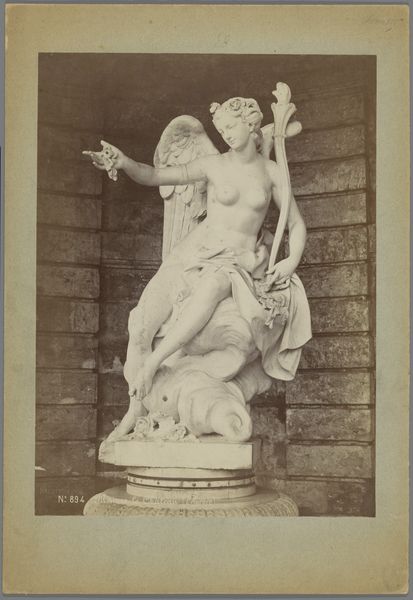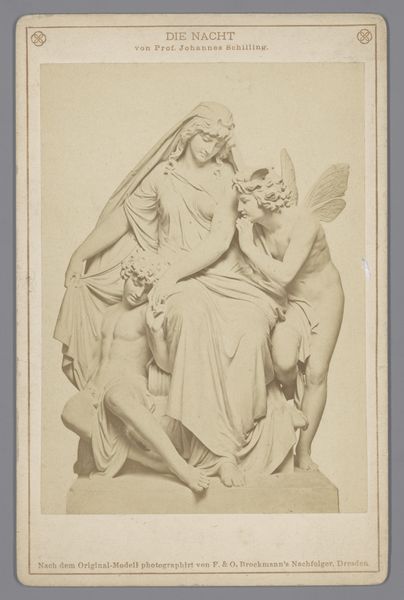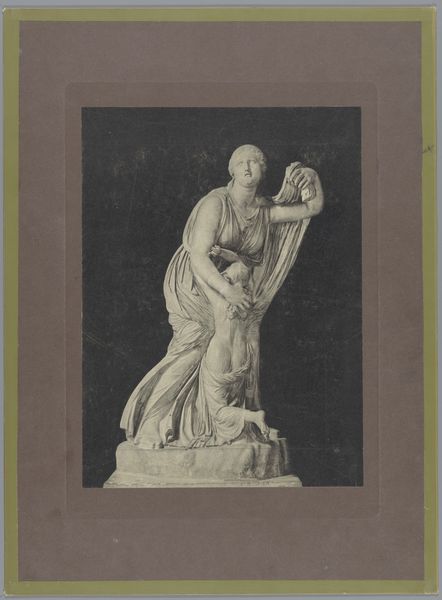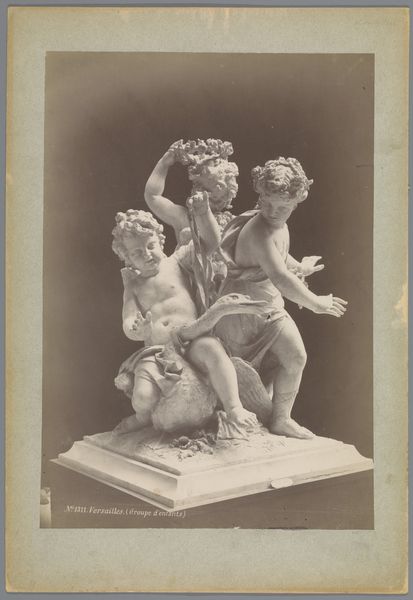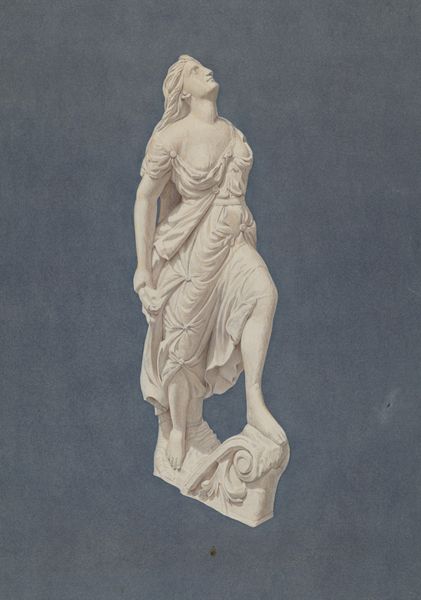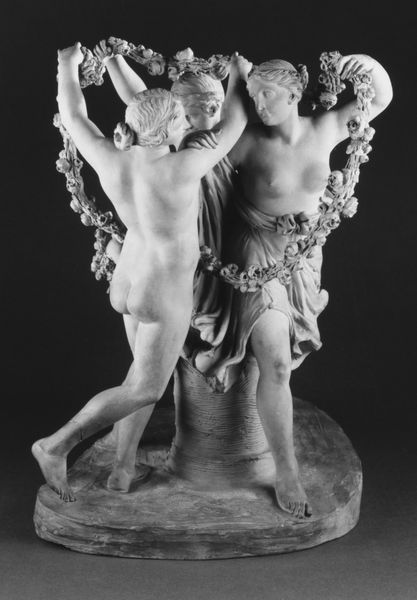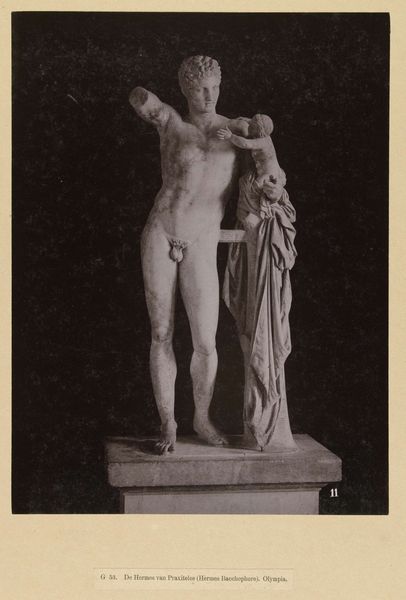
photography, sculpture
#
sculpture
#
greek-and-roman-art
#
figuration
#
photography
#
sculpture
#
nude
Dimensions: height 260 mm, width 202 mm
Copyright: Rijks Museum: Open Domain
Curator: This is a photograph by Anderson (firma) capturing the sculpture, "Psyche and Zephyr," made sometime before 1914. It's part of the Rijksmuseum's collection. What's your immediate reaction to it? Editor: Well, the first thing that strikes me is its rather idealized and somewhat sentimental character. The composition seems overly posed and the figures exhibit a kind of bland perfection. Curator: I see it similarly, although from the other end of the perspective: the positioning is essential for communicating the sculpture's Neoclassical ideals and the complex relationships between the figures of Psyche and Zephyr. We can consider how each gesture adds to our understanding of the allegory. Editor: That's an interesting approach. It makes me think about how this sculpture functions within its historical context. Representations like these often served didactic purposes, reinforcing societal norms and ideals about beauty and the human form, and class hierarchies within artistic production itself. Curator: Indeed. The photograph highlights the artist's ability to render skin, fabric, and even the subtle musculature with extraordinary skill, using light and shadow to articulate form and texture. Also consider how the curvature directs the viewer's sight towards a central vanishing point, thereby uniting all the elements. Editor: True, and that photographic rendering itself becomes an important factor. This image, disseminated widely, influenced how a broader public encountered and understood classical ideals, perhaps perpetuating a very specific, sanitized version of antiquity. It reminds us that how museums, institutions, and art firms interpret artworks influences how we perceive history itself. Curator: That's certainly a valuable point of consideration. It reinforces that even a seemingly simple photograph is a complex cultural object with its own biases and agenda. In that context, I find myself newly aware of the photographic choices—how its tonal range, contrast and careful detail underscore a classical aspiration toward timeless beauty. Editor: Yes, that balance is crucial: to engage with the artistic and philosophical dimensions without sidestepping the historical forces at play. It makes us all the more responsible in considering our role in furthering such discourses, doesn't it?
Comments
No comments
Be the first to comment and join the conversation on the ultimate creative platform.
